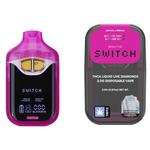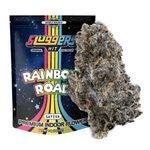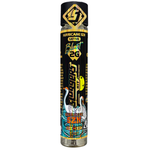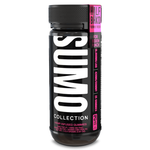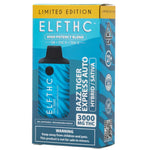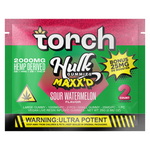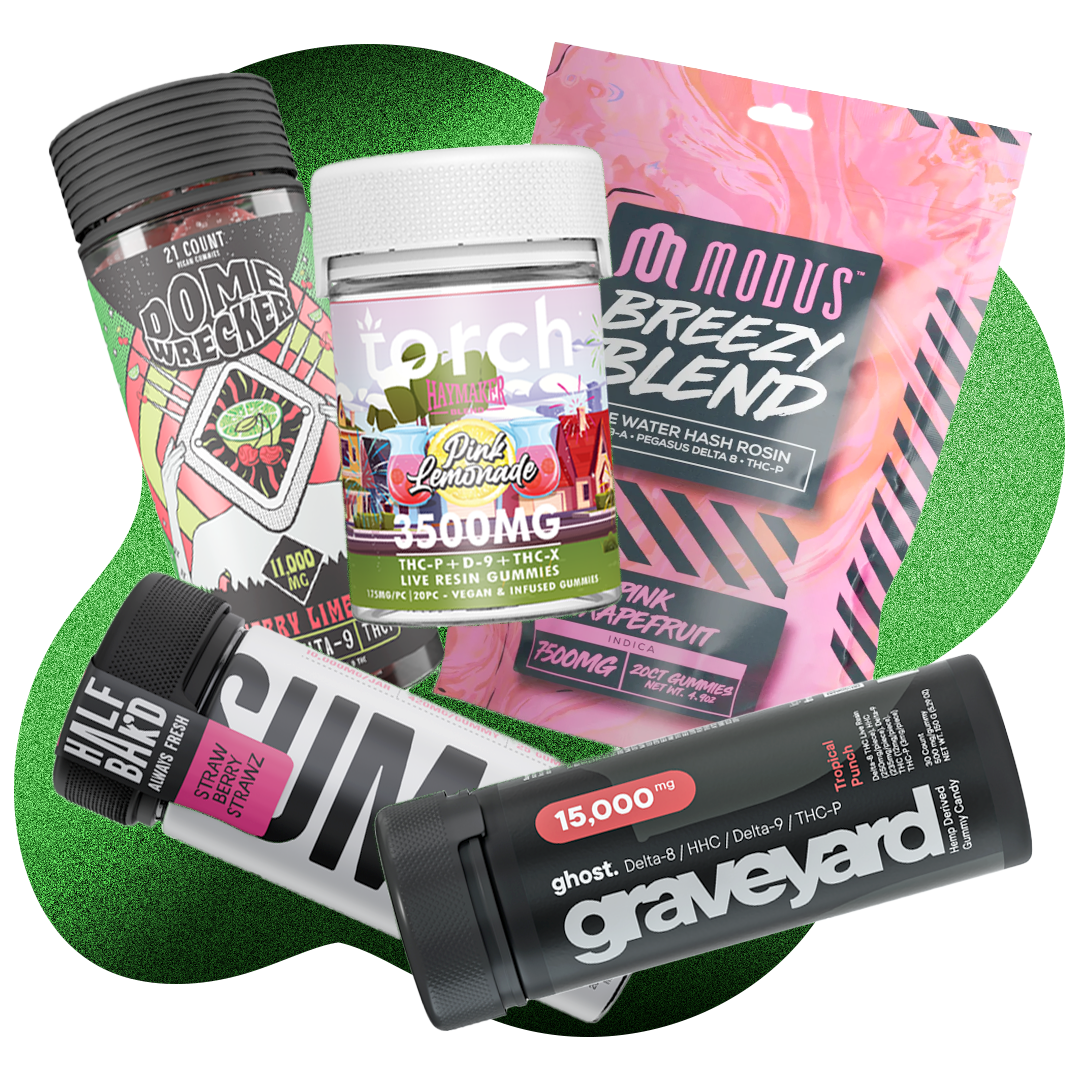7-Hydroxymitragynine is one of the most potent alkaloids found in the kratom (Mitragyna speciosa) plant. Though less abundant than mitragynine, it plays a significant role in kratom's analgesic and psychoactive effects. Research suggests that this compound binds to opioid receptors, making it a key component in kratom's potential pain-relieving and mood-enhancing properties.
In this guide, we’ll explore what 7-hydroxymitragynine does, how it interacts with the body, and its potential uses and risks.
What Is 7-Hydroxymitragynine?
7-Hydroxymitragynine is a natural alkaloid found in small amounts in the leaves of the kratom tree. It is considered the most potent psychoactive compound in kratom, despite being present in much lower concentrations than mitragynine.Key Characteristics of 7-Hydroxymitragynine
- A secondary metabolite of mitragynine, meaning it forms naturally as mitragynine oxidizes.
- Highly potent, with studies showing it binds to opioid receptors 13-46 times more strongly than morphine.
- Affects mood, pain perception, and energy levels, depending on dosage and strain type.
Chemical Structure and Properties
7-Hydroxymitragynine shares a similar molecular structure with mitragynine but with key differences that enhance its binding to opioid receptors.How It Differs from Mitragynine
- Mitragynine is the most abundant kratom alkaloid and is the precursor to 7-OH.
- 7-Hydroxymitragynine has a hydroxyl (-OH) group, which significantly increases opioid receptor affinity.
- It is more lipophilic, meaning it crosses the blood-brain barrier more efficiently.
Biosynthesis and Natural Occurrence
How 7-Hydroxymitragynine Forms in Kratom
- In fresh kratom leaves, mitragynine is the dominant alkaloid.
- As the leaves age or undergo oxidation, some mitragynine converts into 7-hydroxymitragynine.
- Different kratom strains and drying processes affect its concentration levels.
Factors That Influence 7-Hydroxymitragynine Content
- Strain Type – Red vein kratom tends to have higher levels than white or green strains.
- Harvesting and Processing – Sun-dried or fermented kratom may contain increased levels due to oxidation.
- Lab-Synthesized Extracts – Some kratom extracts concentrate 7-OH to enhance potency.
How 7-OH Works in the Body
7-Hydroxymitragynine is an opioid receptor agonist, meaning it binds to mu-opioid receptors in the brain and nervous system. This interaction produces effects similar to opioids, such as pain relief, euphoria, and sedation.Mechanism of Action
- Binds to Opioid Receptors – Primarily mu-opioid receptors, but also delta and kappa receptors to a lesser extent.
- Activates Pain-Relief Pathways – Blocks pain signals from reaching the brain.
- Triggers Neurotransmitter Release – Influences dopamine and serotonin, affecting mood and relaxation.
Pharmacokinetics: Absorption, Metabolism, and Excretion
Understanding how the body processes 7-hydroxymitragynine helps explain its duration of effects and safety profile.Absorption and Bioavailability
- Fast-acting when taken orally, though bioavailability is lower due to first-pass metabolism.
- More potent when taken sublingually (under the tongue) because it bypasses liver metabolism.
Metabolism and Breakdown
- The liver converts 7-hydroxymitragynine into metabolites, which contribute to its pain-relieving effects.
- Metabolites are further processed and eventually excreted.
Excretion and Half-Life
- Eliminated primarily through urine, similar to other alkaloids.
- The half-life is estimated at 2-3 hours, meaning effects peak quickly and decline within a few hours.
7-Hydroxymitragynine’s Role in Pain Relief
One of the primary reasons kratom users seek 7-hydroxymitragynine is for its analgesic (pain-relieving) properties.Why It’s an Effective Pain Reliever
- Strong opioid receptor affinity makes it highly effective for pain management.
- Reduces inflammation and nerve pain without full opioid suppression.
- Shorter duration of action compared to synthetic opioids, reducing overdose risk.
Comparison to Morphine and Other Opioids
- Up to 46 times more potent than morphine in receptor binding studies.
- Less respiratory depression, a key factor in opioid overdose fatalities.
- Users report fewer withdrawal symptoms, though dependency is still possible with prolonged use.
Potential Side Effects and Risks of 7-Hydroxymitragynine
Since 7-hydroxymitragynine acts on opioid receptors, it shares some common side effects with traditional opioids. However, its natural origin and lower respiratory suppression make it somewhat less dangerous than synthetic opioids.Common Side Effects
- Nausea and vomiting – More common in high doses.
- Drowsiness – Some users report mild sedation.
- Dizziness or vertigo – Particularly in new users or those taking large amounts.
- Dry mouth – A common side effect of kratom alkaloids.
- Constipation – Similar to opioids, it can slow digestion.
Serious Risks and Concerns
While kratom and its alkaloids have a lower risk of fatal overdose than opioids, misuse of highly concentrated extracts can still lead to dangerous effects.- Respiratory Depression – While weaker than traditional opioids, excessive 7-hydroxymitragynine consumption can slow breathing.
- Increased Tolerance – Frequent use can lead to diminished effects over time, requiring higher doses.
- Dependency and Withdrawal – Prolonged use may cause mild withdrawal symptoms when stopped abruptly.
- Potential for Addiction – While kratom is less addictive than opioids, extracts with high levels of 7-hydroxymitragynine may increase dependency risk.
Who Should Avoid 7-Hydroxymitragynine?
- Individuals with a history of opioid addiction.
- People with respiratory issues or lung disease.
- Pregnant or breastfeeding women.
- Those taking medications that depress the central nervous system (CNS depressants).
Dependence and Withdrawal Potential
The opioid-like activity of 7-hydroxymitragynine raises concerns about dependency and withdrawal symptoms, especially with long-term use.Is 7-Hydroxymitragynine Addictive?
Kratom is not classified as a traditional opioid, but 7-hydroxymitragynine’s ability to bind to opioid receptors means dependency is possible. However, kratom’s natural composition and weaker respiratory effects make its withdrawal symptoms less severe than traditional opioids.Symptoms of Kratom Withdrawal
- Muscle aches and joint pain
- Fatigue and insomnia
- Irritability and mood swings
- Restlessness and anxiety
- Digestive issues (nausea, diarrhea)
How to Reduce Withdrawal Risk
✔ Use kratom in moderation – Avoid daily high-dose use. ✔ Take breaks – Cycling kratom use prevents tolerance buildup. ✔ Stay hydrated and maintain a healthy diet – Supports overall well-being. ✔ Gradually taper dosage – Instead of stopping abruptly, reduce intake over time. While withdrawal from 7-hydroxymitragynine is not as severe as opioid withdrawal, it can still be uncomfortable for regular users.Legal Status and Regulatory Perspectives
7-Hydroxymitragynine’s potency and opioid receptor activity have made it a subject of legal scrutiny worldwide.Legal Status in the United States
- Federally Legal (but under review) – Kratom is not currently scheduled under the Controlled Substances Act. However, the FDA and DEA have attempted to ban kratom due to concerns over 7-hydroxymitragynine’s opioid-like effects.
-
Banned in Some States – Certain states and cities have restricted or banned kratom sales, including:
- Alabama
- Arkansas
- Indiana
- Rhode Island
- Vermont
- Wisconsin
International Legal Status
- Banned in Some Countries – Nations like Thailand, Australia, and Malaysia classify kratom as a controlled substance.
- Legal but Regulated – Countries like Canada and the UK allow kratom but regulate its sale and distribution.
- Allowed in Some Regions – Countries such as Mexico and some European nations permit kratom with few restrictions.
Why Is Kratom Under Legal Scrutiny?
- Concerns over 7-hydroxymitragynine’s potency.
- The FDA cites a lack of clinical studies proving safety.
- Potential for misuse in highly concentrated extracts.
Therapeutic Potential Beyond Pain Relief
Aside from pain management, research is exploring 7-hydroxymitragynine’s broader medical applications.1. Potential Use for Opioid Withdrawal
Since 7-hydroxymitragynine interacts with opioid receptors, some researchers believe it could be used as a natural alternative for opioid withdrawal management.- Helps reduce cravings and withdrawal symptoms.
- Less dangerous than synthetic opioids.
- More research is needed to confirm effectiveness.
2. Mood Enhancement and Anxiety Reduction
Some kratom users report 7-hydroxymitragynine improves mood and reduces anxiety, possibly due to its dopamine and serotonin activity.- Mild euphoria reported at moderate doses.
- Potential stress relief for some users.
- More clinical trials are needed.
3. Anti-Inflammatory and Neuroprotective Potential
Preliminary studies suggest kratom’s alkaloids may have anti-inflammatory and neuroprotective effects, which could support long-term brain health. While promising, these applications need further clinical research.Frequently Asked Questions (FAQs)
Is 7-Hydroxymitragynine Dangerous?
In moderate amounts, 7-hydroxymitragynine is relatively safe, but high doses or concentrated extracts may increase risks such as dependency or respiratory depression.How Is 7-Hydroxymitragynine Different from Mitragynine?
- Mitragynine is the primary alkaloid in kratom and acts as a partial opioid receptor agonist.
- 7-Hydroxymitragynine is much stronger and has a higher binding affinity for opioid receptors, making it more potent in small amounts.
Can 7-OH Show Up on Drug Tests?
Most standard drug tests do not screen for kratom alkaloids, but specialized tests can detect mitragynine and 7-OH in urine, blood, and hair samples.Is 7-Hydroxymitragynine Legal?
Legality varies by country and U.S. state. Some regions have restricted kratom, while others allow regulated sales.What Are the Best Alternatives to 7-Hydroxymitragynine for Pain Relief?
- CBD or THC products (for natural pain management).
- Turmeric and curcumin supplements (for anti-inflammatory effects).
- Prescription opioids (for severe pain but with a high risk of addiction).
Final Thoughts on 7-Hydroxymitragynine
7-Hydroxymitragynine is a potent kratom alkaloid with strong pain-relieving and mood-enhancing properties. However, its opioid-like effects raise concerns about safety, dependency, and legal status.Key Takeaways:
✔ Powerful analgesic effects comparable to opioids. ✔ Lower risk of respiratory depression than synthetic opioids. ✔ Potential for addiction with high doses or extracts. ✔ Legal status remains controversial in many regions. For safe kratom use, opt for natural, lab-tested products from trusted vendors like D8Gas.com.Sources
- Pharmacological Insights: A study published in ACS Central Science discusses the pharmacological effects of 7-hydroxymitragynine, highlighting its role as an active metabolite of mitragynine and its interaction with opioid receptors.
- Legal Status and Regulatory Perspectives: The U.S. Food and Drug Administration (FDA) provides an overview of kratom, including information on 7-hydroxymitragynine, its legal status, and regulatory considerations.
- Potential for Dependence and Withdrawal: Research published in the Journal of Pharmacology and Experimental Therapeutics evaluates the rewarding effects of mitragynine and 7-hydroxymitragynine, providing insights into their potential for dependence and withdrawal.



